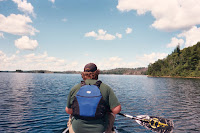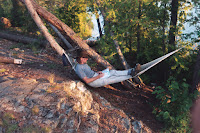
Concluding my intentional path to explore what I can learn to become a better teacher in a remote synchronous online learning environment, here's part 6 of 6. I participated in a Faculty Learning Community (FLC) sponsored by the Division of Online and Strategic Learning of Ball State University. I have periodically posted my reflections in this blog to document my progress, and to serve as a resource for a future me, as I come back to review these posts. Perhaps there will be something of use for other readers that aren't me.
Module 6: Reflections and wrap-up
This module focused our reflection on our experiences during the fall semester. The following reflections summarize my experiences and observations.
At the start of the semester…
I felt pretty comfortable and ready to teach remote synchronous classes. Having finished spring semester, and then summer semester teaching in remote synchronous modality, I was not a newbie at the start of fall semester. Zoom was something new, as I had been using WebEx previously. Although I had participated in many Zoom meetings during the spring and summer, I had not initiated or hosted those meetings, so there were a few things to learn.
Now that the semester has completed, I feel…
I had a very successful semester teaching two sections of what is usually a very challenging course for most learners--CS 222, Advanced Programming--in a remote synchronous mdaility. This was the same course I taught in the summer, and both semesters it seems to have translated well to remote synchronous modality. I do believe it is a bit better taught in a physical classroom, but it worked better than I thought it might when I was preparing to teach it last May.
After reviewing and reflecting on the course evaluations learners provided at the end of the semester my perceptions of a good semester were affirmed. In fact (assuming you believe there is merit in these evaluations), the combined "overall rating of instructor" I received for my two remote synchronous courses (two sections of the same course) were higher (4.6 out of 5) than when I taught the same course a year ago in a classroom (3.6 out of 5). I believe the learners may have been a bit forgiving of the circumstances in which we all found ourselves. I also wonder how much of the difference was that I was teaching in a remote synchronous modality, as opposed to the rest of their courses being asynchronous modality. Maybe I was the lesser of two evils, and looked good, by comparison!
I struggled…
My biggest challenge was building community within the class. This course heavily uses group projects for most of the semester. My sense is that most of the groups formed a community, but the full class, not so much. Due to most of the learners leaving their cameras off, I do not know what most of them look like, and thus will not recognize them when I see them in the future. This will be interesting during future semesters. I have always struggled to learn names but am decent at remembering faces. If I have a learner from this semester in a future course, I will likely not recognize them, nor know their name!
I was pleasantly surprised…
The use of Zoom breakout rooms can actually be better than small group discussions in a classroom due to the ability to randomly assign learners to a room, and thus have learners talk with different people. In a classroom, learners are not likely to get up and walk across the room to talk with a “stranger”. A downside is that for short discussions it is not possible for me to visit all of the rooms, while I could easily walk around a classroom and hear their discussions.
I was able to use the chat window before class started to have learners respond to a “fun” prompt in an attempt to build community. Sometimes the prompt was related to the course, but most of the time it was not. This was a substitute for me talking with a few learners while we waited for the start of class. I will have to think about how I might replicate that in a classroom, but it did generate some interesting interactions amongst the learners.
The ability to meet learners using Zoom meant that I did not have to be in my campus office, yet could still meet with them. This provided for very flexible meeting times for both me and the learners.
Some observations...
I should pay attention to the following when teaching in a remote synchronous modality (although it won't hurt to do it for all modality).
- Intentionally work to build community
- Extra communication and feedback is critical
- Be flexible
- Expect the unexpected
The impact moving forward…
I do not think there is much I will do differently the next time I teach in remote synchronous modality. I do think I will continue holding many of my office hours virtually regardless of my modality of teaching, however. I also think any changes I made to make the course better for remote synchronous modality will be left in place, as they should make an on-campus version of the course better as well.
And the bottom line is…
I will seriously consider teaching in a remote synchronous modality in the future. I still firmly believe courses taught in-person, in a classroom provide the best learning opportunity for most learners. However, remote synchronous learning provides a close substitute, and does provide the opportunity for learners (and the instructor) to attend class without physically being present on campus. A year ago, I would not have believed this course would translate to an online modality as well as it did. I believe the course being taught synchronously, as compared to asynchronously, made the difference. Thanks to COVID-19, I had the opportunity to find out.






